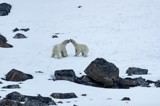Snowy areas like the Arctic and Spitsbergen are one of the most inhospitable places on Earth. However, the polar bear is one of the few animals that can survive there. These magnificent creatures are fascinating creatures that have captivated us humans for decades. The 27th of February is International Polar Bear Day, a day that was founded by polar bear International (PBI) to raise awareness on the issues facing polar bears. To contribute to this we will explore some interesting and little-known facts about polar bears, ranging from their habitat to their hunting habits. We will provide detailed information and scientific facts to give you a comprehensive understanding of these incredible creatures.
You can contribute to Polar Bears International by visiting their website and donating >
1. Less than 2% of polar bear hunts are successful
Although polar bears are extremely effective predators, only 2% of their hunts result in them enjoying a meal. These hunts contain them waiting outside of breathing holes of seals at the water’s edge to come to the surface and breathe. Next to that they also use their nose to search for dens where seal pups stay in their first period of their life.
If their hunt was not successful polar bears have another option: they also eat carcasses and food left by other predators.
2. There is a grizzly-polar bear hybrid
However very rare, hybrids between the grizzly bears and polar bears do exist in the wild and in captivity. In the wild there have been eight confirmed cases of these hybrids, and all of them can be linked to one female polar bear. Scientist have not been able to give an exact explanation for this phenomenon. It might be a result of climate change, since polar bears are more and more obliged to adapt to less cold/icey climates.
Some names for the grizzly-polar bear hybrid are…
- grolar bear,
- pizzly bear,
- zebra bear,
- grizzlar,
- nanula
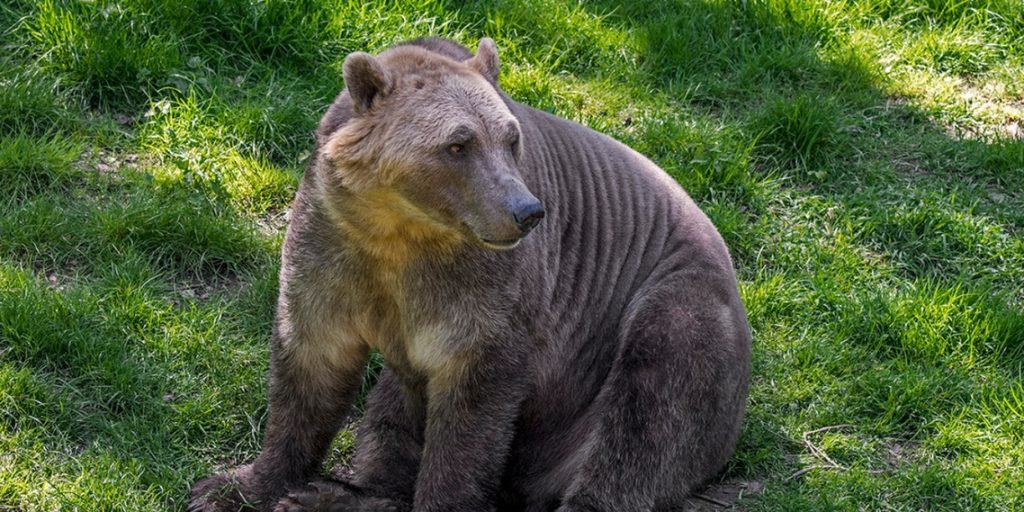
3. There are 20 polar bear sub-populations
As of today there are 20 polar bear sub-populations around the world, and 13 of them are in Canada. The most recent discovery of a new population was in 2022, where researches discovered it in Southeast Greenland. Before that it was assumed that this population was part of the other, but it wasn’t.
These are all of polar bear sub-populations as of today:
- Chukchi Sea
- Laptev Sea
- Kara Sea
- Arctic Basin
- Southern Beaufort Sea
- Northern Beaufort Sea
- Viscount Melville Sound
- Norwegian Bay
- Kane Basin
- Barents Sea
- Davis Strait
- Foxe basin
- Western Hudson Bay
- Southern Hudson Bay
- Southeast Greenland
- East Greenland
- Baffin Bay
- Lancaster Sound
- M’Clintock Channel
- Gulf of Boothia
4. At the end of this century most of polar bear populations will be gone
Researchers expect that in the end of this century we most likely will have lost most of polar bear populations. Right now, it is found that polar bears give birth to fewer cubs. Also, fewer cubs are surviving the first year of their lives. As a result the population of polar bears has declined over the past years, and will continue to decrease.
5. DNA can be extracted from a polar bear footprint
In 2014 researches found out that it is possible to extract DNA from a polar bear footprint. The scooped one of the footprints in the snow they found and took it in a bag. In the lab they found three different DNA markers: one from a polar bear, seal and a seagull.
This really was a breakthrough in this field, since footprints can be used to track family trees of bears which can help identify polar bear populations.
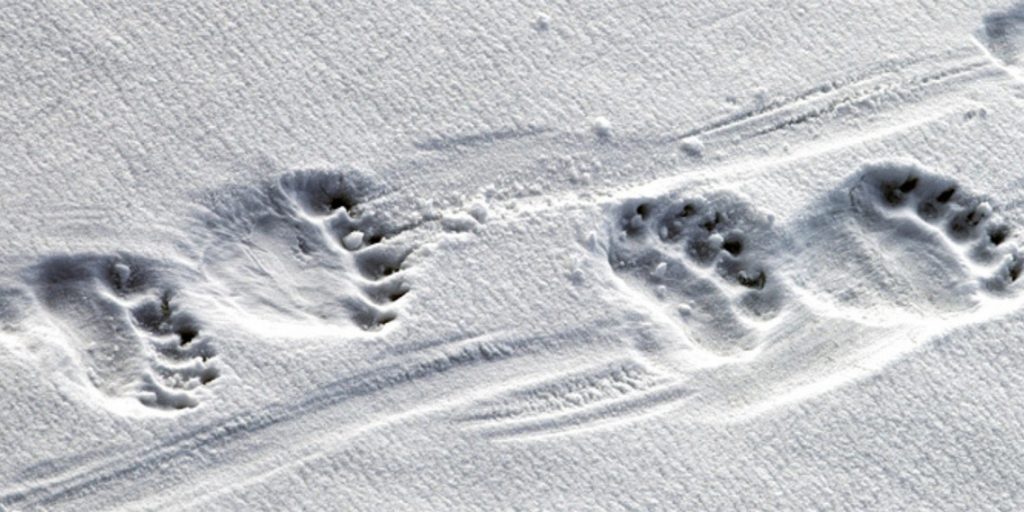
6. Polar bears can swim for 100 kilometres without rest
To keep living in the extreme weather conditions of the Arctic, polar bears are really adapted to these harsh and frigid conditions. Their habitat consists of areas covered by ice including the Arctic Ocean, adjacent seas, and their coastlines. The bears spend most of their lives on the ice, and in the water. This makes them excellent swimmers: they are capable of swimming 100 kilometres (60 miles) without rest.
Between 2004 and 2009 researches tracked 52 female polar bears, and they found one bear that was able to swim nearly 136 kilometre (220 miles) in nearly 10 days with only short rests.
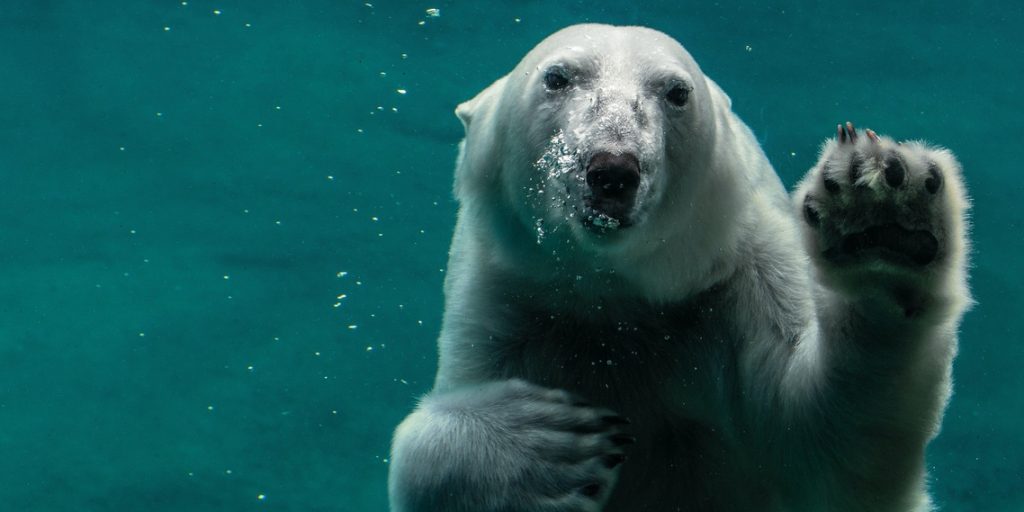
7. The skin of a polar bear is black
Despite the fact that Polar bears appear to be white, their skin is actually black. The black skin is crucial for their survival, since it absorbs the suns heat. When the sunlight penetrates the white fur of a polar bear, their black skin absorbs the warmth helping the bear to stay warm.
Next to that, their black skin helps them being camouflaged in the Arctic. When they are swimming they blend in with dark ocean water when viewed from below.
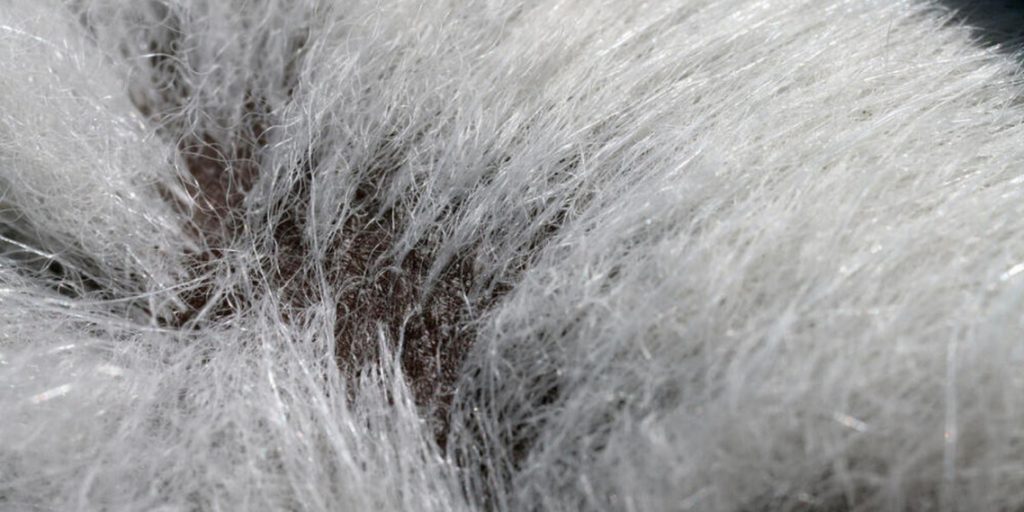
8. Polar bears can smell their prey up to 30 kilometers (20 mile) away
Polar bears have a great nose for food! Since they have adapted to live in one of the harshest environments on Earth, they developed a keen sense of smell that helps them hunt for food.
Some facts about the smell capacities of a polar bear are:
- polar bears can smell a seal’s breathing hole in the ice from more than 1 kilometre (0,6 mile) away,
- polar bears can smell a prey above the water from 30 kilometre (20 miles) distance,
- polar bears can smell a prey from underneath 1 meter (3 feet) of snow.
9. Polar bears are the largest land predators on Earth
Polar bears are the largest land predator on Earth, which makes them the ‘Apex predator’. This means that it is the top predator at the top of their food chain. Male polar bears can grow to a size of 3 meters (10 feet) in length, and 770 kilogram (1.700 pounds) in weight.
In the top 5 of largest land predators on earth the polar bear is followed by the brown bear, the Bengal tiger, the African lion and the American black bear.
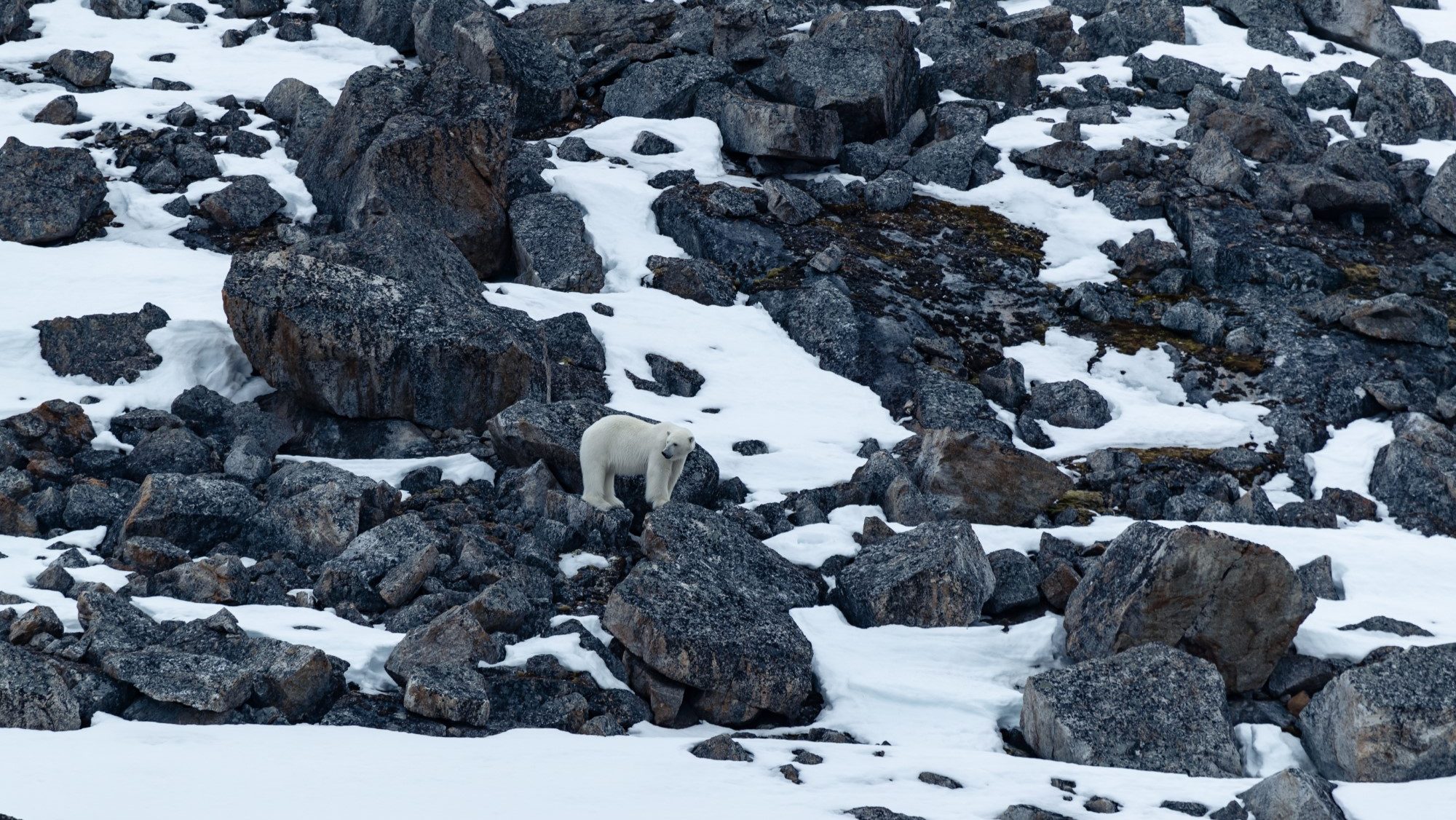
10. Polar bears can live 6 months without food
Polar bears can go without food for several months, while living off the reserves in their bodies. They can store up to 70 kilograms (150 pounds) of food in their stomach. When a male polar bear doesn’t find food for 10 days, their metabolism will slow down until they find their next meal. This is similar what happens to bears that hibernate.
Female polar bears live in dens when raising their cubs. When they raise their cubs that way they don’t eat, drink or defecate for months.
11. Polar bears are no picky eaters
When it comes to food, polar bears are no picky eaters. They will eat about everything they can find. This will vary from carcasses from whales, seals and walruses, to eggs, seaweed and anything they can get their claws on.
However, polar bears need fat and protein stay alive. Researches expect that when the ice will melt, and polar bears can’t access it anymore they will probably can’t get enough of the food they need to stay alive.
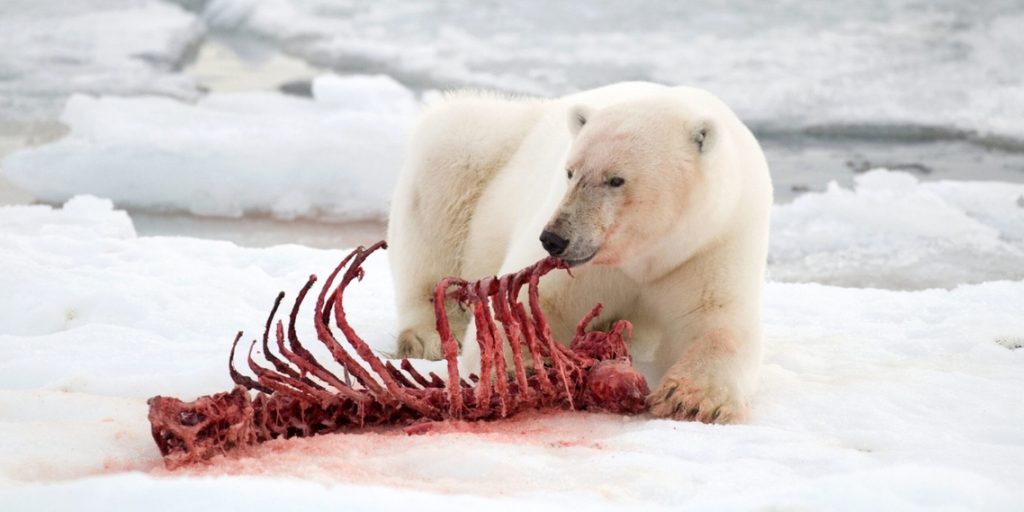
12. A polar bear can weigh as much as 7 refrigerators
When being born, polar bear cubs weigh only about a pound each, but when they’re ready to leave the den after a few months they weigh about 10-15 kilograms (20-33 pounds). After a year they will weigh about 90-160 kilograms (200–350 pounds). When fully grown, a male polar bear can weigh about 770 kilogram (1.700 pounds) and a length of 3 meters (10 feet). A female polar bear can be about half that size.
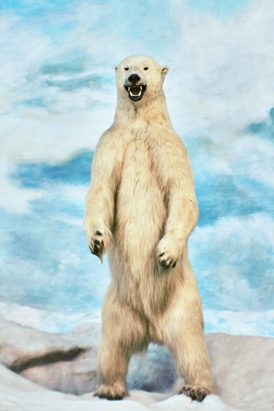
13. Polar bears are champions in isolating their dens
Female polar bears give birth to their cubs in snow dens that they dig into the side of a snowbank. When outside temperatures can drop to -40 degrees celcius (-40 fahrenheid) they use their body warmth to keep the inside temperate at around 0 degrees celcius (32 fahrenheid).
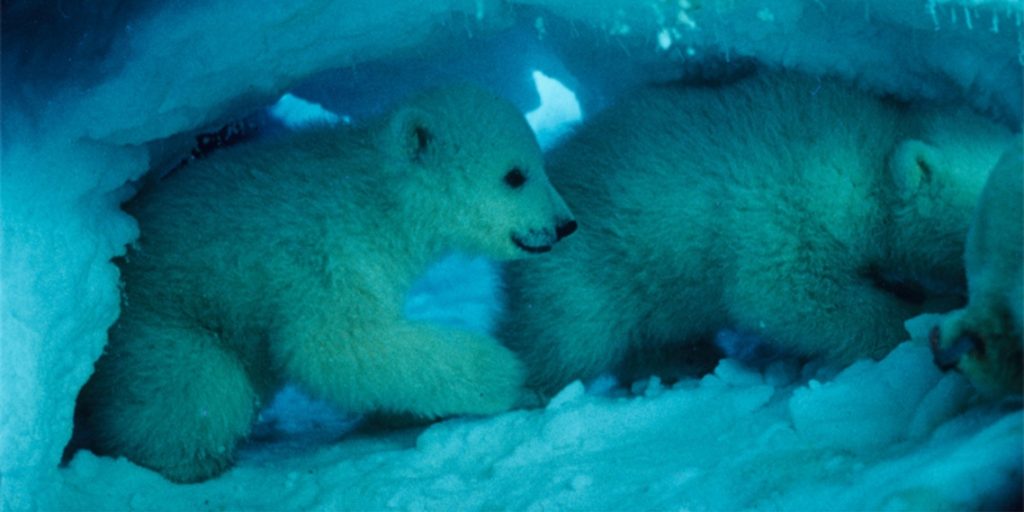
14. The fur of a polar bear is made of 2 layers
The white fur of a polar bear is made of two layers. The inner layer is a soft undercoat, the outer layer is a coat of guard hairs. The outer layer is water repellent and helps the polar bear float in the water. The two layers help the polar bear isolate and keep warm in the cold weather of the Arctic.
15. Polar bears are classified as marine mammals
However polar bears mostly live on the land, they are classified as marine mammals. This is because they rely on sea ice for their survival. They spend most of their time on sea ice, hunting for food like seals and fish.
Bonus fact: Polar bears are really playful!
Let’s and this top 15 with an amazing video of two playful bears. Bears are known for their playful behaviour, which includes rolling around in the snow, wrestling with each other, playing with objects like balls and sticks ánd sledging!
Download our Expedition Manual

Receive our expedition manual with a clear overview of our scheduled voyages. Choose your next expedition and step aboard!



